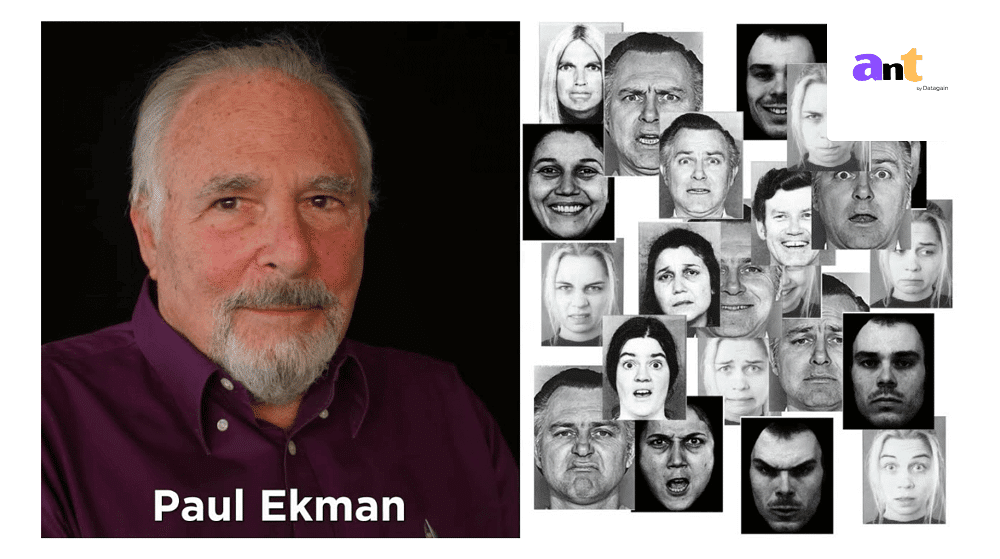
Home » Transcript Library » Psychology » The Psychology of Emotion Transcript
The Psychology of Emotion Transcript
Introduction Music 00:00:00
He knows a lot about science stuff Professor Dave explains.
Professor 00:00:06
When I say the word emotion, what comes to mind? You probably think of the different types of emotions
you may experience on a day to day basis. Like happiness, sadness, anger, and excitement, or maybe
you thought of a chart like this showing different faces displaying various emotions. These are great
examples of emotions, but what are emotions? How do we define them? Are emotions learned? Are they
consistent across cultures? These are all interesting questions that humans have been thinking about for
all of history and we discussed this to some extent in the Biopsychology series. Let's review a bit and then
dig a little deeper. Philosophers like Plato, Aristotle and Descartes believed that emotions are a specific
kind of subjective experience. They are a class of feelings distinct and separate from sensory
experiences, like taste and touch. This idea began to be challenged at the end of the 1800s by
psychologist William James and physiologist Carl Lange. Their theory also known as the James Lang
theory was that emotions are not sacred feelings that are special and distinct from sensory experiences.
Instead external stimuli like sensory experiences lead to physiological reactions that we interpret as an
emotion.
00:01:27
Emotions according to this theory are simply how we interpret our body responding to things in the world.
Here's an example, say you're walking down the street when you see a lion that escaped from the local
zoo. When you see the lion, you begin to shake and your heart begins to race. The James Lang theory
suggests that you will only then feel frightened. You feel frightened, because you are shaking and your
heart is racing, not the other way around. It's the feeling in your body that causes the emotion fear. There
are obviously some issues with this theory, one of which is described nicely by scientists Walter Cannon
and Philip Bard in the Canon Bard theory of emotion. People can have physiological responses without
being linked to a specific emotion. Your heart could be racing, because you've just been exercising, but
you probably don't feel afraid in this situation. In contrast to the James Lang theory, the Cannon Bard
theory suggests that emotions and the physiological reactions are two separate things that occur at the
same time and one does not cause the other.
00:02:34
Today psychologists generally define emotions as a psychological state involving three distinct
components working together. A subjective experience, a physiological response and a behavioral
response. These components work together to create what we experience as emotions. Subjective
experience refers to how you as an individual perceive an event regardless of how it is objectively
occurring or how other people perceive it. You might feel excited to start a new job while your friend might
feel terrified about starting the exact same job. In this case, there are differences in how you and your
friend perceive the same event. The physiological part of emotion is how your body actually responds to
an experience. Is your heart palpitating with fear from starting your new job? Or is it beating in
excitement? The same physiological response, fast heartbeats occurs with multiple emotions and will
interact with your subjective experience to shape which emotion you feel at a specific time.
00:03:39
Finally, the behavioral response is how you actually express emotion. How are you going to express your
excitement on your first day at your new job? Are you going to smile, because you feel happy or are you
going to laugh with joy instead? All three of these components subjective experience, physiological
response and behavioral response work together to create your emotions. One important distinction we
must mention before moving on is the difference between emotion and mood. We often use the two
words interchangeably in daily life, but psychologists view them as two distinct things. Emotions tend to
be short lived and more intense than moods, and they usually have a specific and identifiable cause.
Moods on the other hand, tend to be more mild than emotions and longer lasting. It's also sometimes
hard to determine the specific event that causes a mood. For example, you might feel sad after watching
a sad movie or reading a sad book. This sad emotion probably won't last that long and you know exactly
what caused it. If you're in a sad mood though, you will be feeling sadder for a much longer period of time
and you probably won't know exactly what is making you feel gloomy.
00:04:57
Now that we have a better understanding of how psychologists define emotions let's start digging deeper.
Here's an important question, are emotions universal. Do all cultures have the same emotions and
corresponding facial expressions? Charles Darwin thought so. He believed that all humans displayed similar emotions and that we could trace the evolutionary history of emotion across cultures and even
across different species. Here is an excerpt from his paper, THE EXPRESSION OF THE EMOTIONS IN
MAN AND ANIMALS, "the young and the old of widely different races, both with man and animals
express the same state of mind by the same movements." In other words, he believed that all humans
and even some animals express emotion in similar ways. Having similar emotional expressions across
cultures and species would actually be useful and helpful in avoiding danger. If emotions are similar, you
will be able to understand the emotions of other humans and animals even if you don't speak their
language. You can tell that an animal is upset and defensive if it's clawing and hissing and then know to
leave it alone, or you can tell if another person is getting angry and leave them alone to calm down even if
you don't speak their language.
00:06:17
Being able to correctly interpret the emotions of other people and animals allows us to recognize and
avoid danger. But was Darwin, right? Are emotions universal? Psychologist Paul Ekman tested Darwin's
idea to see just how universal emotions are across cultures. He collected a bunch of pictures depicting
various emotions and then asked people to match an emotional term to each photo. Here's an example,
what emotion is this face showing? Anger, disgust, fear, happiness, sadness or surprise. Ekman found in
his research that 93 to 97% of his participants were able to correctly identify happiness, meaning that
happiness was the best recognized emotion. This was followed by surprise, anger, disgust, sadness, and
finally fear. For all of these emotions participants were significantly better than chance at correctly
identifying them, meaning that they weren't just guessing. This suggests the validity of universal
emotions, but there's just one issue with this study. All of the participants came from cultures that had
access to other cultures and facial expressions through things like TV, movies and magazines. They
could have learned to recognize emotions from learning about them through television, meaning that
those emotions weren't expressed naturally in their culture.
00:07:46
To truly test if emotions are universal. Ekman tested a pre literate hunter gatherer culture in Papua, New
Guinea. This group was totally isolated and had no access to things like Western television and literature
and very few chances for interactions with other cultures. If this isolated group was also able to recognize
the emotions on faces, there would be stronger evidence for the universality of emotions. Just like in the
prior study, Ekman found that Papua New Guineans were successfully able to identify happiness,
surprise, anger, disgust, sadness, and fear. So, these emotions are similar across cultures, even in
cultures who would not have learned expressions from other cultures. To provide even more evidence for
the universality of emotion, certain facial expressions are innate. Congenitally blind athletes who have
never visually perceived a facial expression will produce the same facial expressions involving happiness,
anger, sadness, disgust, and surprise as sighted athletes. Because these emotional expressions
apparently are not learned, this suggests that there are some emotions that are universal and therefore
an inherent part of being human.
00:09:04
00:09:04
Today, psychologists generally agree upon six basic emotions that are universal across cultures. Those
being sadness, happiness, fear, anger, surprise and disgust. But what about more complex emotions like
grief or jealousy? Complex emotions are mixtures of the six basic emotions. Hate for example, is defined
as a mixture of fear, anger and disgust. Unlike the basic emotions, complex emotions can differ in how
they appear on a person's face and vary between cultures and individuals. Grief, for example, looks very
different between cultures. Cultural differences in complex emotions and even the expression of basic
emotions has been found time and time again. In the United States, it appears that the culture of honor
impacts the expression of anger. In a 1996 study, Southerners displayed more anger, were more
physiologically aroused and were more likely to engage in aggressive behavior than Northerners in
response to an insult. Eastern and Western cultures also appear to differ in emotional displays. One 1972
study compared Japanese and American students watching a film depicting a disgusting surgical
procedure. The Japanese students were much more stone faced than American students when watching
the film in the presence of an authority figure. Japanese immigrants to the US are also more reactive to
stressful situations after being in the US for about a year. This suggests that American culture changes
the emotional display of the Japanese immigrants.
00:10:48
In general, westerners value, promote and experience more high arousal emotions like excitement and
irritation than Easterners who value and promote low arousal emotions like peacefulness and boredom. So, to sum everything up, what do we know about emotions? Well, there do appear to be some basic
universal emotions that are consistent across cultures, but culture also affects the display of some
emotions particularly the more complex ones. Like a lot of psychological concepts we will talk about
throughout this series, emotions are not as simple as they seem and are subject to influences outside of
our bodies like the cultures we are all a part of. Thanks for watching. Subscribe to my channel for more
tutorials. Support me on Patreon, so I can keep making content, and as always feel free to email me,
professordaveexplains@gmail.com.
Copyright Disclaimer
Under Title 17 U.S.C. Section 107, allowance is made for “fair use” for purposes such as criticism, comment, news reporting, teaching, scholarship, and research. Fair use is permitted by copyright statute that might otherwise be infringing.






